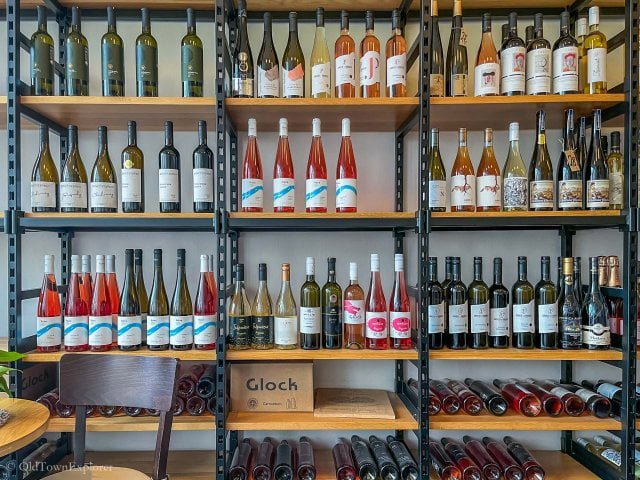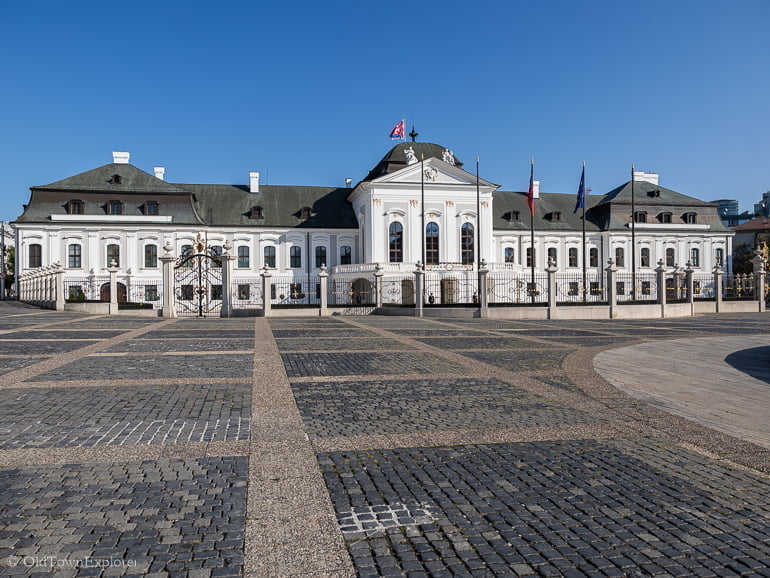Slovakia
Explore Slovakia: Food, Wine & Architecture
Slovakia combines Central European traditions, medieval towns, and dramatic landscapes. From Gothic churches in UNESCO-listed villages to folk architecture in the Carpathians, the country offers a mix of cultural heritage and architectural diversity that reflects its position at the crossroads of empires.
Slovakia has six UNESCO World Heritage cultural sites:
- Bardejov Town Conservation Reserve
- Frontiers of the Roman Empire – The Danube Limes (Western Segment)
- Historic Town of Banská Štiavnica and the Technical Monuments in its Vicinity
- Levoča, Spišský Hrad and the Associated Cultural Monuments
- Vlkolínec
- Wooden Churches of the Slovak part of the Carpathian Mountain Area
U.S. passport holders do not need a visa for tourist or business stays of up to 90 days within a six-month period, starting from the date of first entry. All foreign visitors must register with the local police within 24 hours of arrival.
We spent a month in Bratislava during our second year of full-time travel and plan to visit Košice in the future. This guide shares what we learned along the way, including practical tips and personal recommendations.
Bratislava
Bratislava, the capital of Slovakia, is located on the Danube River near the border with Austria and Hungary. The 18th-century Old Town is a pedestrian-only area known for its lively bars and cafes. The reconstructed Bratislava Castle is perched on a hill overlooking the Old Town.
The city is surrounded by vineyards and the Little Carpathian Mountains, crisscrossed with forested hiking and cycling trails.

Future Destinations
We enjoyed our first trip to Slovakia and look forward to returning in the future
Košice
TBD
Slovakia Food
Slovakia is known for its delicious and hearty cuisine. Traditional Slovak dishes are often made with simple, local ingredients highlighting the country’s agricultural heritage.
Local Food Products
Slovakia currently has six products that have been granted the “registered” status. Those are:
- Skalický trdelník (PGI)
- Slovenská parenica (PGI)
- Slovenská bryndza (PGI)
- Slovenský oštiepok (PGI)
- Ovčí salašnícky údený syr (TSG)
- Ovčí hrudkový syr – salašnícky (TSG)
Additionally, there are eight products that have been given the “published” status. The “published” status indicates that the country has applied for one of the three labels, but the application is still open to appeals from other countries. Those products are:
- Tekovský salámový syr (PGI)
- Zázrivský korbáčik (PGI)
- Oravský korbáčik (PGI)
- Liptovská saláma / Liptovský salám (TSG)
- Lovecký salám / Lovecká saláma (TSG)
- Spišské párky (TSG)
- Špekáčky / Špekačky (TSG)
- Bratislavský rožok / Pressburger Kipfel / Pozsonyi kifli (TSG)

Traditional Dishes
Appetizers
- Pirohy
- Lokše
- Demikát
Main Courses
- Guláš
- Bryndzové halušky
- Kapustnica
Side Dishes
- Zemiakové placky
- Strapačky
Deserts
- Bratislavský rožok
- Bábovka
- Laskonky
- Medvedie labky
Slovakia Wine
Slovakia has six wine-growing regions, mostly located in the southern part of the country. Slovak wines, excluding Tokaj, are not widely recognized internationally but are popular domestically and in neighboring countries.
Wine Regions
The wine-producing regions in Slovakia are:
- Little Carpathians Wine Region (Malokarpatská vinohradnícka oblasť)
- South Slovak Wine Region (Južnoslovenská vinohradnícka oblasť)
- Nitra Wine Region (Nitrianska vinohradnícka oblasť)
- Central Slovak Wine Region (Stredoslovenská vinohradnícka oblasť)
- East Slovak Wine Region (Východoslovenská vinohradnícka oblasť)
- Tokaj Wine Region (Vinohradnícka oblasť Tokaj)
The majority of these regions are located in the warmer southwest and along its southern border, planted with cool-climate grape varieties.

Grape Varieties
Red Wine
- Blaufränkisch
- St. Laurent
- Cabernet Sauvignon
- Pinot Noir
- Alibernet
- André
White Wine
- Grüner Veltliner
- Welschriesling
- Müller-Thurgau
- Pinot Blanc
- Riesling
- Pinot Gris
- Gewürztraminer
- Dunaj
- Devín
Wine Labels
- Wine Without Geographic Indication
- Wine With Protected Geographic Indication
- Wine With Protected Indication of Origin
- Quality Wine
Tokaj Wines
- Traditional Varieties
- Classifications
Slovakia Architecture
The architecture of Slovakia is a unique combination of different styles, reflecting the rich history and culture of the country.

Architectural Styles
- Romanesque and Gothic
- Renaissance and Baroque
- Art Nouveau
UNESCO World Heritage Sites
- Bardejov Town Conservation Reserve
- Frontiers of the Roman Empire – The Danube Limes (Western Segment)
- Historic Town of Banská Štiavnica and the Technical Monuments in its Vicinity
- Levoča, Spišský Hrad and the Associated Cultural Monuments
- Vlkolínec
- Wooden Churches of the Slovak part of the Carpathian Mountain Area
Where Is Slovakia Located?
Slovakia is a landlocked country in Central Europe, bordered by Czechia to the northwest, Austria to the west, Hungary to the south, Ukraine to the east, and Poland to the north. It lies along the Carpathian Mountains and the Danube River.
FAQs About Slovakia
Is Slovakia a rich or Poor country?
Slovakia is considered a developed country with a high-income economy. It has made significant progress since gaining independence in 1993 and is now one of the fastest-growing economies in the European Union.
What is Slovakia famous for?
Slovakia is famous for its beautiful natural landscapes, including the High Tatras mountains and the Danube River. It is also known for its rich history and cultural heritage, with many castles, medieval towns, and UNESCO World Heritage sites to explore. Slovakia is renowned for its traditional folk music and dance, as well as its delicious cuisine, which includes dishes such as bryndzové halušky (potato dumplings with sheep cheese) and kapustnica (sauerkraut soup).
What country did Slovakia used to be?
In July 1992, Slovakia declared its sovereignty and started negotiating with the Czech Republic to dissolve the country of Czechoslovakia. After receiving parliamentary approval, on January 1, 1993, Slovakia and the Czech Republic became two distinct and self-governing countries.
Is Slovakia a good place to live?
Slovakia can be a great place to live for many people. It has a rich history, beautiful landscapes, and a relatively low cost of living compared to other European countries. The country offers excellent healthcare, a high-quality education system, and a strong sense of community. Additionally, Slovakia has a growing economy and opportunities for employment in various industries. However, it is important to consider personal preferences and individual circumstances when determining if Slovakia is the right place for you to live. Factors such as climate, culture, language barriers, and personal connections should also be considered when making this decision.
Is Slovakia safe to visit?
Slovakia is generally considered a safe country to visit. It has a low crime rate and the locals are known for their warm hospitality towards tourists. The country’s well-developed infrastructure and efficient public transportation system make it easy to explore its beautiful landscapes and cultural sites. However, as with any travel destination, it is always advisable to take standard safety precautions, such as being aware of your surroundings, keeping an eye on your belongings, and following local laws and regulations. It is also recommended to check the latest travel advisories before your trip to ensure a smooth and enjoyable experience in Slovakia.
What Language is Spoken in Slovakia?
Slovak is the official language of the Slovak Republic.
Do I Need to Speak Slovak to Visit Slovakia?
No, speaking the local language is not necessary to visit Slovakia. A very large percentage of locals speak English.
What Currency is Used in Slovakia?
The currency of Slovakia is the Euro.
Do I Need a Visa for Slovakia?
Citizens from the United States, United Kingdom, Canada, and Australia don’t need a visa to visit Slovakia if they stay 90 days or less. For more information on visa-free travel in Slovakia, check out our article on traveling visa-free.
Do I Need an Electrical Adapter for Visiting Slovakia?
Slovakia’s electrical outlets are Type C and E. Travelers from the United States will need an adapter. It is the same adapter used for the rest of Europe.
If you have many items to plug in, we recommend a travel power strip with multiple USBs and standard plug-ins. Using a power strip, you will only need one adapter to plug the strip into the wall.
Is It Safe to Rent a Car and Drive in Slovakia?
Yes, renting a car and driving in Slovakia is extremely safe. The roads are well-maintained and easy to navigate.
